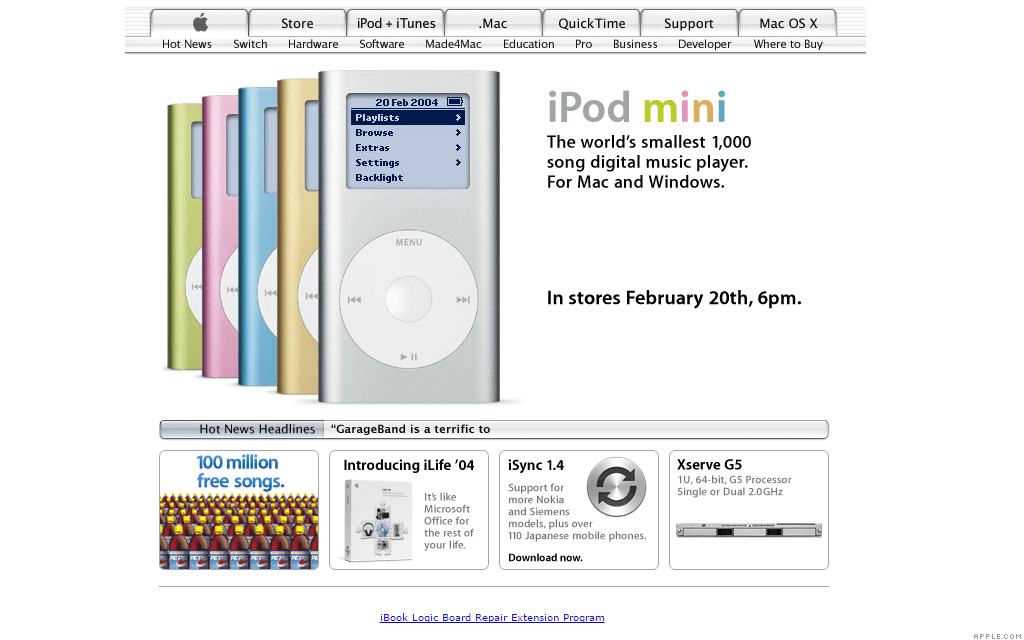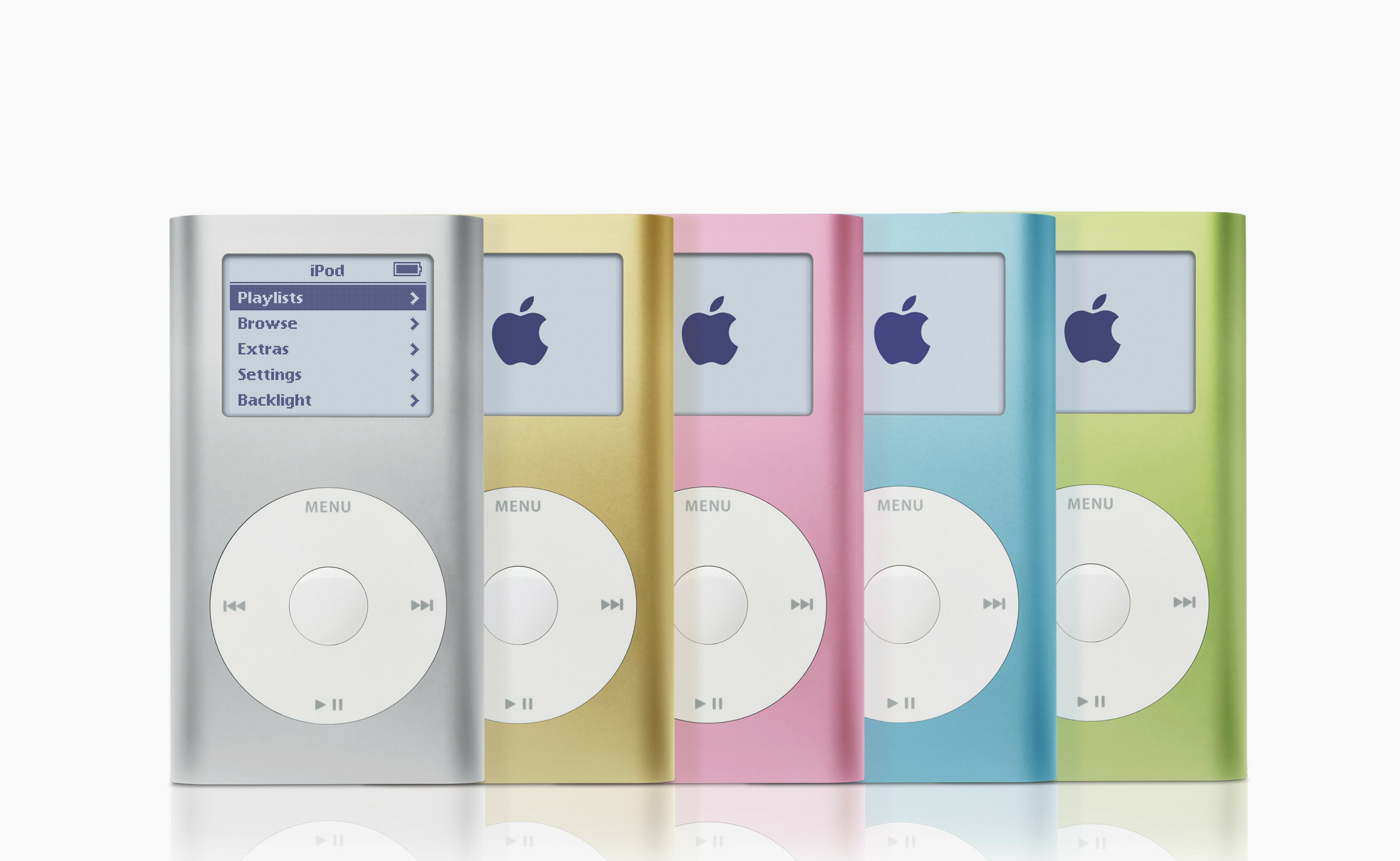 February 20, 2004: Music goes small as the iPod mini launch brings the reimagined digital audio player to Apple stores.
February 20, 2004: Music goes small as the iPod mini launch brings the reimagined digital audio player to Apple stores.
Released with 4GB of storage and in five colors, the diminutive device features a new “click wheel” that integrates control buttons into a solid-state, touch-sensitive scroll wheel. It also showcases Cupertino’s growing fascination with aluminum, which will become a hallmark of Apple design.
Despite its small size, the new music player’s market potential looms large. In fact, the iPod mini soon becomes Apple’s fastest-selling music player yet.
iPod mini launch on Feb. 20, 2004
The iPod mini arrived as the iPod helped erase memories of Apple’s horrible run during the 1990s. The year after the iPod mini launch, the number of iPods sold hit 10 million. Meanwhile, Apple’s revenue increased at a rate previously unimaginable.
As you might guess from its name, the iPod mini itself brought incredible miniaturization. Like the later iPod nano, this device did not try to shrink down everything about its bigger siblings. Instead, it showcased a new way of solving the same problems.
Here comes the click wheel

Image: Apple
In this case, that meant ditching the physical buttons of the larger iPod Classic for buttons incorporated into the four compass points of the click wheel itself.
“The click wheel was designed out of necessity for the mini because there wasn’t enough room for [the buttons on] the full-size iPod,” said Apple CEO Steve Jobs. “But the minute we experienced it, we just thought, ‘Oh my God! Why didn’t we think of this sooner?”
Apple has embraced the gradual transition away from chunky physical buttons ever since. Just look at the haptic Home button that shipped with the iPhone 7 and the total lack of a Home button, starting with the iPhone X in 2017.
Minimalist Apple design and an obsession with aluminum
A study in minimalism, the iPod mini looked less like a tech product and more like a stylish Zippo lighter. The music player also marked the beginning of Apple design chief Jony Ive‘s obsession with aluminum.
Ive’s team previously used metal for the Titanium PowerBook G4. But while that laptop became a big hit for Apple, titanium proved expensive and challenging to work with. It needed to be treated with metallic paint to stop it from showing scratches and fingerprints.
As Ive’s team members researched aluminum for the iPod mini, they fell in love with the material, which brought the twin benefits of lightness and strength. It didn’t take long for Apple to roll out aluminum as a material for MacBooks, iMacs and other products.
Like the plastic original iMac, the aluminum iPod mini came in a variety of colors, achieved in this case using an electrochemical anodization process.
iPod mini sparks Apple’s love affair with fitness
The tiny music player also sparked Apple’s invasion of the fitness arena. People used the device to listen to music during workouts at the gym, and Cupertino played up this new use in advertisements. iPods started showing up as accessories that could be worn on the body. Many people who owned a larger iPod with more storage also bought an iPod mini for use while running.
Today’s fitness-focused Apple Watch ads owe a lot to the marketing of the tiny music player that kick-started Cupertino’s fashion-focused advertising for wearable devices.
Do you remember the iPod mini launch? Which version did you have? Leave your comments below.



One response to “Today in Apple history: iPod mini is ‘world’s smallest music player’”
I have earned 104000 bucks last year by freelancing online and I manage that by working part time for 3+ hours /day. I was following a business model I was introduced by this web-site i found online and I am so amazed that i made so much money. It’s very newbie-friendly and I’m just so grateful that i discovered it. Here’s what I do… STATICTAB.COM/astkxim